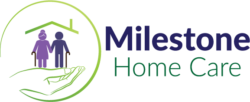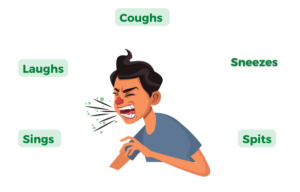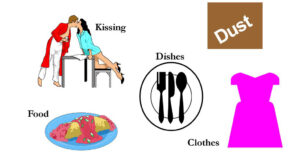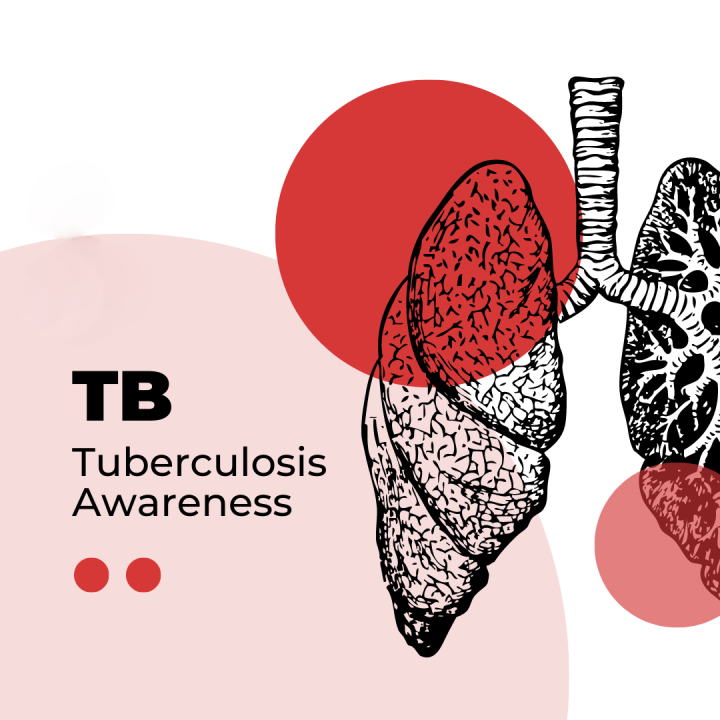Annual TB Education
TB bacteria are spread through the air from one person to another. The TB bacteria are put into the air when a person with TB disease of the lungs or throat coughs, speaks, or sings. People nearby may breathe in these bacteria and become infected.
TB is NOT spread by
- shaking someone’s hand
- sharing food or drink
- touching bed linens or toilet seats
- sharing toothbrushes
- kissing
When a person breathes in TB bacteria, the bacteria can settle in the lungs and begin to grow. From there, they can move through the blood to other parts of the body, such as the kidney, spine, and brain.
TB disease in the lungs or throat can be infectious. This means that the bacteria can be spread to other people. TB in other parts of the body, such as the kidney or spine, is usually not infectious.
People with TB disease are most likely to spread it to people they spend time with every day. This includes family members, friends, and coworkers or schoolmates.
Not everyone infected with TB bacteria becomes sick. As a result, two TB-related conditions exist: latent TB infection and TB disease.
Latent TB Infection
TB bacteria can live in the body without making you sick. This is called latent TB infection. In most people who breathe in TB bacteria and become infected, the body is able to fight the bacteria to stop them from growing. People with latent TB infection:
- Have no symptoms
- Don’t feel sick
- Can’t spread TB bacteria to others
- Usually have a positive TB skin test reaction or positive TB blood test
- May develop TB disease if they do not receive treatment for latent TB infection
Many people who have latent TB infection never develop TB disease. In these people, the TB bacteria remain inactive for a lifetime without causing disease. But in other people, especially people who have a weak immune system, the bacteria become active, multiply, and cause TB disease.
TB Disease
TB bacteria become active if the immune system can’t stop them from growing. When TB bacteria are active (multiplying in your body), this is called TB disease. People with TB disease are sick. They may also be able to spread the bacteria to people they spend time with every day.
Many people who have latent TB infection never develop TB disease. Some people develop TB disease soon after becoming infected (within weeks) before their immune system can fight the TB bacteria. Other people may get sick years later when their immune system becomes weak for another reason.
For people whose immune systems are weak, especially those with HIV infection, the risk of developing TB disease is much higher than for people with normal immune systems.
The Difference between Latent TB Infection (LTBI) and TB Disease
The Difference between Laten) and TB Disease | |
A Person with Latent TB Infection | A Person with TB Disease |
|
|
|
|
|
|
|
|
|
|
|
|
Symptoms of TB disease depend on where in the body the TB bacteria are growing. TB bacteria usually grow in the lungs (pulmonary TB). TB disease in the lungs may cause symptoms such as
- a bad cough that lasts 3 weeks or longer
- pain in the chest
- coughing up blood or sputum (phlegm from deep inside the lungs)
Other symptoms of TB disease are
- weakness or fatigue
- weight loss
- no appetite
- chills
- fever
- sweating at night
Symptoms of TB disease in other parts of the body depend on the area affected.
People who have latent TB infection do not feel sick, do not have any symptoms, and cannot spread TB to others.
Some people develop TB disease soon after becoming infected (within weeks) before their immune system can fight the TB bacteria. Other people may get sick years later, when their immune system becomes weak for another reason.
Overall, about 5 to 10% of infected persons who do not receive treatment for latent TB infection will develop TB disease at some time in their lives. For persons whose immune systems are weak, especially those with HIV infection, the risk of developing TB disease is much higher than for persons with normal immune systems.
Generally, persons at high risk for developing TB disease fall into two categories:
- Persons who have been recently infected with TB bacteria
- Persons with medical conditions that weaken the immune system
Persons who have been Recently Infected with TB Bacteria
This includes:
- Close contacts of a person with infectious TB disease
- Persons who have immigrated from areas of the world with high rates of TB
- Children less than 5 years of age who have a positive TB test
- Groups with high rates of TB transmission, such as homeless persons, injection drug users, and persons with HIV infection
- Persons who work or reside with people who are at high risk for TB in facilities or institutions such as hospitals, homeless shelters, correctional facilities, nursing homes, and residential homes for those with HIV
Persons with Medical Conditions that Weaken the Immune System
Babies and young children often have weak immune systems. Other people can have weak immune systems, too, especially people with any of these conditions:
- HIV infection (the virus that causes AIDS)
- Substance abuse
- Silicosis
- Diabetes mellitus
- Severe kidney disease
- Low body weight
- Organ transplants
- Head and neck cancer
- Medical treatments such as corticosteroids or organ transplant
- Specialized treatment for rheumatoid arthritis or Crohn’s disease
What to Do If You Have Been Exposed To TB
You may have been exposed to TB bacteria if you spent time near someone with TB disease. The TB bacteria are put into the air when a person with active TB disease of the lungs or throat coughs, sneezes, speaks, or sings. You cannot get TB from
- Clothes
- Drinking glass
- Eating utensils
- Handshake
- Toilet
- Other surfaces
If you think you have been exposed to someone with TB disease, you should contact your doctor or local health department about getting a TB skin test or a special TB blood test. Be sure to tell the doctor or nurse when you spent time with the person who has TB disease.
It is important to know that a person who is exposed to TB bacteria is not able to spread the bacteria to other people right away. Only persons with active TB disease can spread TB bacteria to others. Before you would be able to spread TB to others, you would have to breathe in TB bacteria and become infected. Then the active bacteria would have to multiply in your body and cause active TB disease. At this point, you could possibly spread TB bacteria to others. People with TB disease are most likely to spread the bacteria to people they spend time with every day, such as family members, friends, coworkers, or schoolmates.
Some people develop TB disease soon (within weeks) after becoming infected, before their immune system can fight the TB bacteria. Other people may get sick years later, when their immune system becomes weak for another reason. Many people with TB infection never develop TB disease.
Preventing Latent TB Infection from Progressing to TB Disease
Many people who have latent TB infection never develop TB disease. But some people who have latent TB infection are more likely to develop TB disease than others. Those at high risk for developing TB disease include:
- People with HIV infection
- People who became infected with TB bacteria in the last 2 years
- Babies and young children
- People who inject illegal drugs
- People who are sick with other diseases that weaken the immune system
- Elderly people
- People who were not treated correctly for TB in the past
If you have latent TB infection and you are in one of these high-risk groups, you should take medicine to keep from developing TB disease. There are several treatment options for latent TB infection. You and your health care provider must decide which treatment is best for you. If you take your medicine as instructed, it can keep you from developing TB disease. Because there are less bacteria, treatment for latent TB infection is much easier than treatment for TB disease. A person with TB disease has a large amount of TB bacteria in the body. Several drugs are needed to treat TB disease.
Preventing Exposure to TB Disease While Traveling Abroad
In many countries, TB is much more common than in the United States. Travelers should avoid close contact or prolonged time with known TB patients in crowded, enclosed environments (for example, clinics, hospitals, prisons, or homeless shelters).
Although multidrug-resistant (MDR) and extensively drug-resistant (XDR) TB are occurring globally, they are still rare. HIV-infected travelers are at greatest risk if they come in contact with a person with MDR or XDR TB.
Air travel itself carries a relatively low risk of infection with TB of any kind. Travelers who will be working in clinics, hospitals, or other health care settings where TB patients are likely to be encountered should consult infection control or occupational health experts. They should ask about administrative and environmental procedures for preventing exposure to TB. Once those procedures are implemented, additional measures could include using personal respiratory protective devices.
Travelers who anticipate possible prolonged exposure to people with TB (for example, those who expect to come in contact routinely with clinic, hospital, prison, or homeless shelter populations) should have a TB skin test or a TB blood test before leaving the United States. If the test reaction is negative, they should have a repeat test 8 to 10 weeks after returning to the United States. Additionally, annual testing may be recommended for those who anticipate repeated or prolonged exposure or an extended stay over a period of years. Because people with HIV infection are more likely to have an impaired response to TB tests, travelers who are HIV positive should tell their physicians about their HIV infection status.
845 Sir Thomas Ct. Suite 9
Harrisburg, PA 17109
Phone: (717) 317 9037
Fax: (717) 798 3144
contact@milestonehomecare.com







